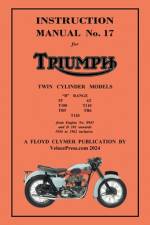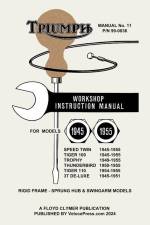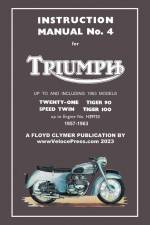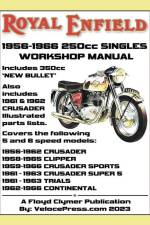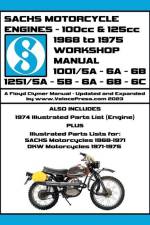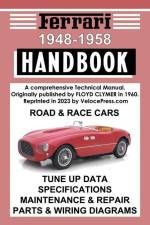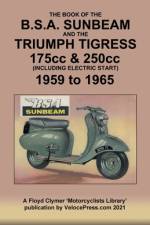457
204 pages and more than 100 illustrations and charts, size 5.5 x 8.5 inches. Originally published under a similar title, this publication is a faithful reproduction of the A. St. J. Masters 1961 5th edition of the 1937-1961 Triumph Single Cylinder workshop manual published in the USA by Floyd Clymer under arrangement with the original publishers C. Arthur Pearson Ltd. of London UK.There are very few workshop manuals that deal with the early single-cylinder Triumph motorcycles. This is likely due to the fact that in 1945 at the end of WW2 when Triumph resumed production of their civilian line of motorcycles they discontinued the manufacture of single-cylinder machines. From that point onwards, they concentrated on their twin-cylinder models and it was not until 1952 that Triumph announced another single, the 150cc T15 Terrier.SINGLE CYLINDER - ALL MODELS 1937-1945: When this manual was originally published in 1949 its primary focus was on the 1937 to 1945 single cylinder motorcycles which included a war-surplus market that was well stocked with ex-military singles. Models covered are: 2H, 2HC, 3S, 3SE, 3SW, 3H, 3HW, 5S, 5SE, 5SW, 5H, 6S, T70, T80 & T90. The bulk of these machines were based on a design that dates back to 1934, which also makes this manual of use to owners of those earlier Triumph singles.TERRIER & TIGER CUB 1953-1961: Ultimately, the 1961 5th edition of this manual was revised and expanded to include the 1953-1961 Terrier and Tiger Cub models. The information included is appropriate for all T15, T20, T20C & T20S models fitted with an external distributor. The engine section includes the 1960 change to energy transfer ignition, plus the change at engine number 57617, when the split line between the main castings was moved to the center line of the cylinder.Many Triumph enthusiasts consider that the 'external distributor' Tiger Cub models brought the 'true' Triumph single cylinder line to a conclusion. This is further supported by the fact that the final workshop manual for the T15, T20, T20C & T20S published under the Triumph name was the August 1964 manual No.8 (part number 906/64) which only included the external distributor models. In addition, under BSA ownership, the Tiger Cub engine had previously been utilized as the basis for the 1959 BSA C15 and ultimately by the BSA 'Bantam Cub' series from 1966 onwards.Unfortunately, Triumph motorcycle owners are subjected to considerable confusion surrounding the appropriate selection from the multitude of originals and reprints of the various manuals that have recently flooded the online marketplace. We encourage you to exercise caution when purchasing a manual for your motorcycle or automobile as many of the reprints found on internet websites are from 'bedroom sellers' at enticingly low prices by individuals that really have no idea what they are selling. Many are nothing more than poor quality comb-bound photocopies that are scanned and printed complete with greasy pages and thumbprints and, as such, are deceptively described as 'pre-owned', 'used' or even 'refurbished'! In addition, they are often advertised for the incorrect series and/or model years.


